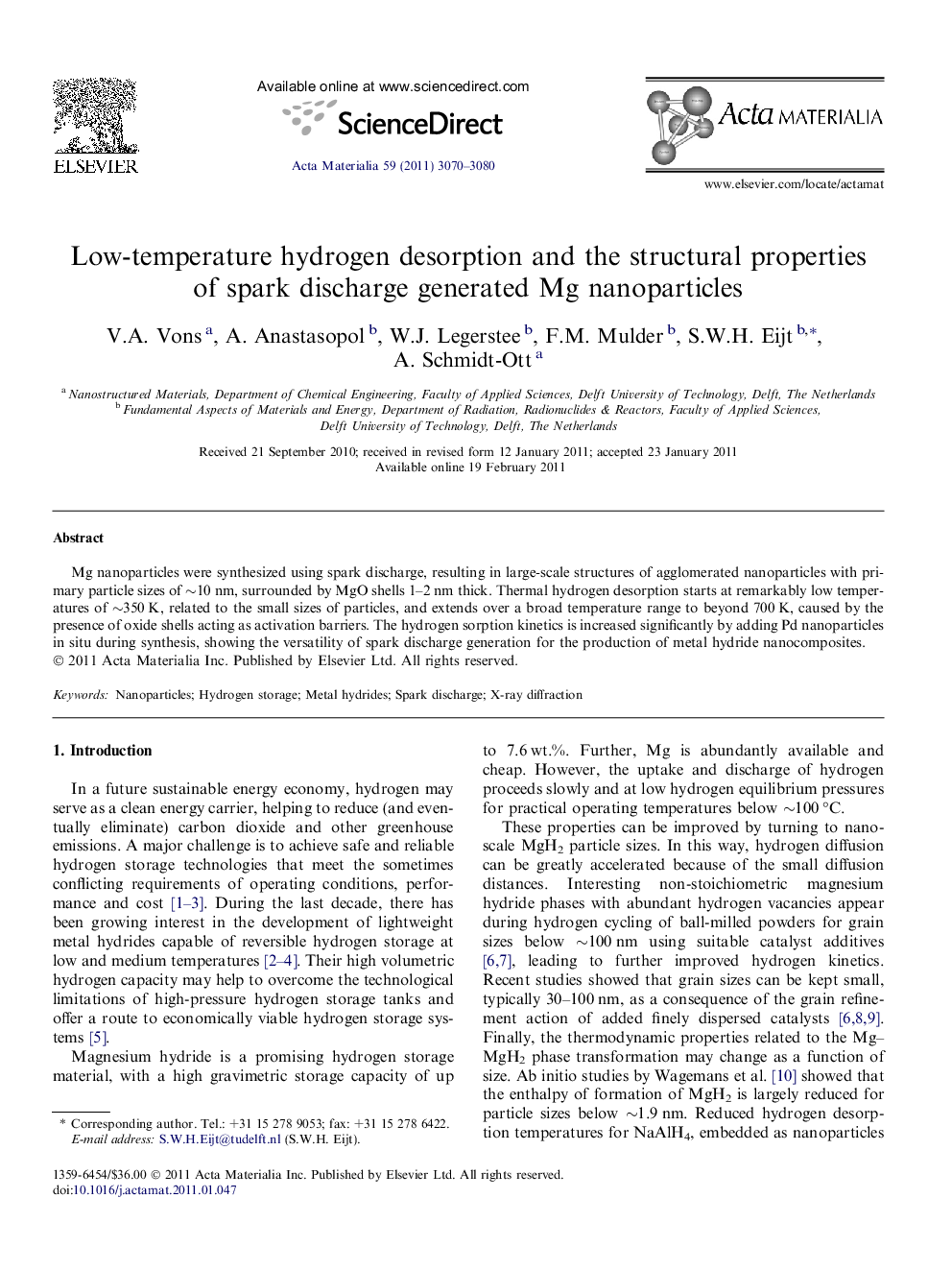| Article ID | Journal | Published Year | Pages | File Type |
|---|---|---|---|---|
| 1447190 | Acta Materialia | 2011 | 11 Pages |
Mg nanoparticles were synthesized using spark discharge, resulting in large-scale structures of agglomerated nanoparticles with primary particle sizes of ∼10 nm, surrounded by MgO shells 1–2 nm thick. Thermal hydrogen desorption starts at remarkably low temperatures of ∼350 K, related to the small sizes of particles, and extends over a broad temperature range to beyond 700 K, caused by the presence of oxide shells acting as activation barriers. The hydrogen sorption kinetics is increased significantly by adding Pd nanoparticles in situ during synthesis, showing the versatility of spark discharge generation for the production of metal hydride nanocomposites.
Research highlights► Spark discharge generated Mg nanoparticles form large-scale agglomerated structures. ► The small size of MgH2 nanoparticles leads to low temperature hydrogen desorption. ► The hydrogen desorption is characterized by a wide range of apparent activation energies. ► Pd nanoparticles added in-situ by a second spark generator induce faster kinetics. ► Spark discharge generation shows great promise to create metal hydride nanocomposites.
